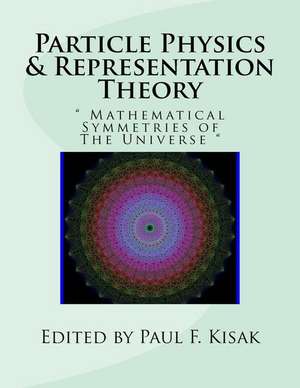Particle Physics & Representation Theory
Autor Edited by Paul F. Kisaken Limba Engleză Paperback
Preț: 123.52 lei
Nou
Puncte Express: 185
Preț estimativ în valută:
23.64€ • 24.59$ • 19.51£
23.64€ • 24.59$ • 19.51£
Carte disponibilă
Livrare economică 24 martie-07 aprilie
Preluare comenzi: 021 569.72.76
Specificații
ISBN-13: 9781532971402
ISBN-10: 1532971400
Pagini: 156
Dimensiuni: 216 x 280 x 8 mm
Greutate: 0.38 kg
ISBN-10: 1532971400
Pagini: 156
Dimensiuni: 216 x 280 x 8 mm
Greutate: 0.38 kg
